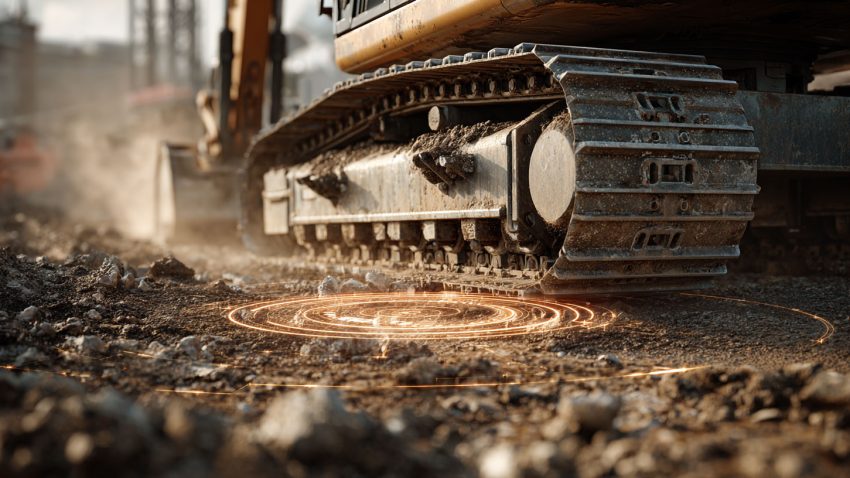How to Write a Job Hazard Analysis (JHA) That Keeps Crews Safe and Satisfies OSHA Requirements
Table of Contents:

Every jobsite is filled with moving parts — and just one oversight can put workers, schedules, and budgets at risk. That’s why a well-written Job Hazard Analysis (JHA) is more than a safety form — it’s a roadmap for preventing injuries and proving compliance. The best JHAs don’t just check boxes; they translate complex OSHA standards into clear, practical guidance that every crew member understands before work begins.
For superintendents and project managers, writing a JHA that satisfies OSHA starts with understanding how the process actually unfolds in the field. Each task must be broken down into steps, potential hazards identified, and proper controls applied before anyone starts working. When this is documented clearly and reviewed daily, the result is a proactive safety culture that prevents incidents and passes inspections with ease.
In this article, we’ll walk through the essential elements of writing a JHA that truly protects your team while meeting OSHA’s requirements. You’ll learn how to structure your hazard analysis, choose effective controls, and integrate digital tools to simplify the entire process — all while ensuring every form stands up to scrutiny from auditors and owners alike.
Understanding OSHA’s Core Requirements for JHAs
OSHA requires that every employer assess and document workplace hazards before work begins. A JHA fulfills that obligation by systematically identifying risks associated with each task and defining specific control measures. But meeting OSHA’s expectations isn’t just about paperwork — it’s about proving that those controls are communicated, implemented, and reviewed continuously.
A strong JHA ties real-world site conditions to the written plan. It includes details like who’s performing the task, what tools are being used, and which environmental conditions may change risk levels. OSHA inspectors will often compare JHAs to field activities, checking if workers are following what’s documented. This means accuracy and clarity are critical — vague or incomplete forms can lead to citations or worse, preventable injuries.
Top Benefits
- Provides documented proof of OSHA compliance and proactive hazard management
- Reduces risk of incidents by identifying and mitigating hazards before work starts
- Builds a culture of accountability between supervisors and field crews
Best Practices
- Write JHAs using clear, plain language everyone on site can understand
- Include photos or sketches to visualize high-risk tasks
- Update your JHA whenever conditions, tools, or crew assignments change
Q&A Mini Section
Q: What does OSHA look for in a JHA during inspections?
A: Inspectors focus on whether hazards were properly identified and if controls match real jobsite conditions.
Q: Can a single JHA cover multiple tasks?
A: Only if the hazards and controls are identical — otherwise, separate analyses are needed.
Q: How can contractors ensure ongoing compliance?
A: By reviewing and updating JHAs daily and maintaining accessible digital records.
When written properly, a JHA doesn’t just meet OSHA’s standards — it elevates the entire safety program by keeping the documentation aligned with real field conditions.

Breaking Down Each Job Step for Hazard Identification
The first step in writing a great JHA is defining the job itself. Break it into manageable steps — not too broad that hazards are missed, but not so detailed that the form becomes unmanageable. Each step should focus on one specific action or task component, such as lifting rebar, operating a lift, or installing conduit.
Once the steps are listed, identify potential hazards at each one. Think through what could go wrong: struck-by incidents, falls, pinch points, chemical exposure, or equipment malfunction. Next, assign control measures — what can be done to eliminate or minimize each hazard? This may include engineering controls, administrative procedures, PPE requirements, or supervision levels. The more specific and realistic your controls are, the better your JHA will protect the crew and hold up during audits.
Top Benefits
- Helps uncover hidden hazards before they lead to incidents
- Improves crew awareness of task-specific risks and safety measures
- Strengthens your audit readiness with detailed step-by-step analysis
Best Practices
- Involve field workers in listing job steps and identifying hazards
- Validate each step against recent incident reports or safety data
- Group similar hazards under standard categories for consistency
Q&A Mini Section
Q: How many job steps should a JHA include?
A: Typically 5–10, depending on the complexity of the task — enough to cover all key phases without redundancy.
Q: What if the same hazard appears across multiple steps?
A: Note it each time but maintain consistent control language for clarity.
Q: Should subcontractors create their own JHAs?
A: Yes, but the general contractor should review and align them with site-wide safety plans.
Breaking work into precise steps transforms the JHA from a formality into a teaching tool — one that anticipates risks and ensures crews know exactly what to expect before they begin.
Writing Clear Hazard Descriptions and Control Measures
The most common reason JHAs fail to meet OSHA standards is unclear language. Phrases like “use caution” or “be careful” don’t qualify as control measures. Instead, a well-written JHA should specify exactly how hazards will be controlled — such as “use fall arrest system anchored to structural beam before accessing elevated surface.” The goal is to make the form so explicit that any worker, regardless of experience, could follow it without confusion.
A good JHA balances technical accuracy with readability. Avoid jargon, acronyms, or overly complex engineering terms unless absolutely necessary. Remember, OSHA inspectors and owners alike value clarity. If the form can’t be easily interpreted by those performing the work, it’s not compliant. Supervisors should also verify that control measures are both feasible and enforceable on-site, ensuring the plan can actually be implemented in the field.
Top Benefits
- Creates actionable, easy-to-follow safety guidance for every worker
- Reduces misunderstandings during safety audits and inspections
- Demonstrates due diligence in hazard mitigation and control verification
Best Practices
- Use verbs that describe concrete actions (e.g., “install,” “inspect,” “secure”)
- Reference specific PPE types, tools, and procedures by name
- Review hazard wording with field leads to confirm clarity and accuracy
Q&A Mini Section
Q: How detailed should hazard controls be?
A: Specific enough that any trained worker could safely perform the task without additional explanation.
Q: Is it okay to copy controls from old JHAs?
A: Only if they truly match the new task — each JHA must reflect current conditions.
Q: Should safety managers review every JHA?
A: Yes, especially for high-risk tasks or when new equipment or crews are introduced.
When written clearly, a JHA becomes a reliable instruction manual for safety — one that protects crews, satisfies OSHA, and shows your company takes compliance seriously.
StruxHub
Discover how StruxHub can revolutionize your construction management. Contact us today!
Using Crew Participation to Improve JHA Accuracy
The best JHAs are written with the crew, not for them. When workers help identify hazards, they’re more invested in following the controls. Field participation also reveals insights that office-prepared forms often miss — like real pinch points, unstable surfaces, or congested work zones that aren’t obvious from drawings. Crew involvement makes hazard analysis more practical, relevant, and effective.
Start by discussing tasks during daily huddles or toolbox talks. Ask team members to describe how they actually perform their work. Supervisors should listen for variations from planned methods — these differences often highlight hidden risks. When everyone has input, it’s easier to develop realistic control measures that workers will follow willingly rather than reluctantly.
Top Benefits
- Encourages ownership and accountability for safety among all crew members
- Improves accuracy and field relevance of hazard controls
- Builds a culture of collaboration and trust across trades
Best Practices
- Conduct “walk-and-talk” JHA reviews on site before high-risk activities
- Let workers point out potential hazards directly on tablets or digital forms
- Recognize and reward teams that actively improve safety documentation
Q&A Mini Section
Q: Why involve the crew in JHA writing?
A: They know the work best — their experience helps identify practical, site-specific hazards.
Q: What’s the best way to get honest feedback?
A: Create an open atmosphere where reporting risks isn’t punished but encouraged.
Q: How can participation reduce incidents?
A: When workers help create safety plans, they’re more likely to follow them accurately in the field.
Crew collaboration turns the JHA process into a living system of communication and accountability — one that keeps everyone alert, aware, and audit-ready.

StruxHub
Experience the power of StruxHub today and witness firsthand how it can revolutionize your construction operations.
Integrating Digital Tools for Smarter JHA Management
Paper JHAs are easy to lose, damage, or overlook. Digital JHA platforms solve these problems by centralizing documentation, automating reminders, and creating instant audit trails. For superintendents and safety managers, these tools are game-changers — ensuring consistency, accuracy, and accessibility across all projects.
Digital forms allow users to create templates that automatically populate standard data such as project name, trade, and safety references. Supervisors can update hazard controls in real time, attach site photos, and collect digital signatures from every crew member. If OSHA or an owner requests proof, all records are instantly available. This level of transparency not only satisfies compliance but also demonstrates leadership in safety technology adoption.
Top Benefits
- Prevents loss of records through cloud storage and version control
- Simplifies verification and reporting during inspections or audits
- Enables real-time updates and digital sign-offs from any device
Best Practices
- Link JHAs to related Pre-Task Plans and Daily Reports for context
- Train field teams on mobile JHA workflows before project rollout
- Schedule automatic reminders for recurring safety form reviews
Q&A Mini Section
Q: Are digital JHAs accepted by OSHA?
A: Yes, as long as they are complete, signed, and accessible for review.
Q: What makes digital JHAs more reliable?
A: Timestamped records and version tracking ensure no information is missed or altered.
Q: How can small contractors adopt digital tools easily?
A: Start with free or low-cost safety platforms, then scale as crews become comfortable.
Digital JHAs streamline documentation and reinforce compliance without adding administrative burden — a vital step toward creating safer, smarter jobsites.
Ensuring Review, Approval, and Continuous Improvement
Even the most detailed JHA loses value if it isn’t reviewed and improved over time. Continuous improvement means each JHA is treated as a dynamic document — revised after near misses, equipment changes, or feedback from the field. This cycle helps organizations evolve their safety practices while keeping OSHA compliance airtight.
Safety managers should schedule periodic reviews of completed JHAs to identify recurring hazards or ineffective controls. Patterns often reveal where training or engineering improvements are needed. Sharing these insights across teams builds institutional knowledge and consistency across all projects.
Top Benefits
- Strengthens safety performance through regular feedback and data analysis
- Ensures every JHA remains current and accurate as conditions change
- Demonstrates proactive commitment to safety during audits and client reviews
Best Practices
- Conduct monthly JHA audits to track trends and update procedures
- Incorporate lessons learned into training and orientation materials
- Use dashboards to visualize hazard frequency and control effectiveness
Q&A Mini Section
Q: How often should JHAs be re-evaluated?
A: After every major change in scope, procedure, or environmental condition.
Q: What’s the best way to share improvements across crews?
A: Use digital dashboards or safety newsletters summarizing key lessons.
Q: Why is ongoing review critical for compliance?
A: OSHA values evidence of continuous improvement — it shows the system is actively maintained.
Treating JHAs as evolving documents strengthens safety performance and ensures your compliance framework grows alongside your projects.
How StruxHub Helps Teams Write and Manage OSHA-Compliant JHAs
StruxHub makes writing, reviewing, and storing JHAs effortless for modern construction teams. Superintendents can build structured templates, fill them out in the field, and collect digital signatures directly from mobile devices. Every action — from creation to crew acknowledgment — is timestamped for full transparency and audit readiness.
StruxHub also links JHAs with related project data, such as Pre-Task Plans, Daily Reports, and Equipment Logs. This integration provides complete visibility into how tasks, hazards, and safety measures align. When OSHA or an owner requests documentation, contractors can instantly retrieve everything — organized, verified, and ready to present.
Top Benefits
- Centralized JHA management with instant digital access and reporting
- Seamless integration with other safety and logistics workflows
- Automated tracking ensures every JHA stays current and audit-ready
Best Practices
- Assign JHA ownership in StruxHub to promote accountability
- Attach relevant safety documentation or photos for added proof
- Use analytics dashboards to monitor trends and identify recurring risks
Q&A Mini Section
Q: How does StruxHub improve OSHA compliance?
A: It ensures every JHA is complete, reviewed, and accessible, reducing audit stress and documentation errors.
Q: Can StruxHub support multiple contractors on the same project?
A: Yes, with controlled permissions for each trade, keeping documentation organized.
Q: What makes StruxHub better than standalone safety apps?
A: It unifies JHA management with scheduling, reporting, and coordination — streamlining everything in one platform.
With StruxHub, safety becomes part of your daily workflow — not an afterthought. The platform empowers contractors to meet OSHA requirements, protect their crews, and stay audit-ready every day.

FAQ: Writing Effective Job Hazard Analyses (JHAs) for OSHA Compliance
1. What are the essential steps to writing a Job Hazard Analysis (JHA)?
Writing a strong JHA begins with identifying each step of a job or task, then listing potential hazards associated with each step. Once the hazards are defined, establish control measures to eliminate or reduce the risks. These may include engineering controls, administrative procedures, PPE requirements, or safe work practices. Each JHA should also document who performed the analysis, the date, and the signatures of participating crew members. Supervisors should ensure the JHA is specific to current site conditions — not recycled from old projects. The process is most effective when performed collaboratively, involving crew input and real-time site observations. Ultimately, the goal is to create a living document that evolves with the project, aligning both with OSHA standards and the team’s real work practices.
2. How do I make sure my JHA satisfies OSHA requirements?
OSHA doesn’t mandate a specific JHA format but requires that employers identify and mitigate hazards before work begins. To satisfy OSHA, your JHA must demonstrate that hazards were identified, controls were implemented, and employees were trained. Each JHA should also show ongoing review and continuous improvement — evidence that your safety program adapts as work progresses. OSHA inspectors often cross-check documentation against jobsite conditions, so clarity and accuracy are critical. Using digital JHA tools strengthens compliance by maintaining complete records, timestamps, and signatures. These systems ensure you can instantly prove that your safety process meets OSHA’s 29 CFR 1910.132 standard for hazard assessment and control documentation.
3. What are the most common mistakes contractors make when writing JHAs?
One major mistake is writing JHAs that are too vague. Terms like “use caution” or “be aware” offer no actionable guidance. Another error is failing to update the JHA when tasks, tools, or environmental conditions change — a red flag during audits. Contractors also sometimes treat JHAs as paperwork rather than communication tools, filling them out quickly without engaging the crew. The best JHAs are interactive and site-specific. They include measurable actions like “install guardrail,” “inspect lifting strap before use,” or “use respirator rated for silica dust.” Avoid copy-pasting templates from old projects; instead, tailor each analysis to the actual risks on your current site. Consistency and specificity are what turn JHAs into powerful compliance and safety assets.
4. How can digital JHA platforms make writing and tracking easier?
Digital JHA systems streamline every part of the process — from creation to audit. They provide templates that enforce consistency, auto-fill recurring data, and send reminders for review. Crews can sign off directly from tablets or phones, reducing paper clutter and lost forms. Many systems integrate with Pre-Task Plans and Daily Reports, creating a complete record of safety actions tied to each work activity. This transparency makes OSHA inspections smoother since auditors can quickly trace documentation and verify compliance. Digital tools also help teams analyze patterns — identifying recurring hazards or control failures across multiple projects. By centralizing data, digital JHAs transform safety documentation into a living, trackable system that’s efficient, accessible, and easy to prove during inspections.
5. How does StruxHub help contractors stay OSHA-compliant with their JHAs?
StruxHub automates and organizes the entire JHA process. Superintendents can create standardized templates that align with OSHA’s requirements for hazard identification and control documentation. The platform records every change, approval, and signature in real time, producing a timestamped digital trail for auditors. StruxHub also links JHAs to Pre-Task Plans, Daily Reports, and Delivery Logs, giving a full picture of site safety management. During inspections, contractors can instantly retrieve complete JHA histories from any device — proving compliance without delays. The system encourages continuous improvement by tracking trends and notifying managers when reviews are overdue. With StruxHub, contractors can confidently demonstrate that their JHAs are current, thorough, and OSHA-compliant — protecting both crews and company reputation.

StruxHub
Discover how StruxHub can revolutionize your construction management. Contact us today!
Related Pillar Articles:
Best Guide to Construction Logistics Plans (CLPs): What Owners Want to See Before Work Starts



